|
The Monistic Theory
by Nhân Tử Nguyễn Văn Thọ
TOC |
Preface | Chapters:
1 2
3 4
5 6
7 8
9
10 11 12
13 14
15 16
17 18
19
Chapter 13
Theosophy and the Monistic Theory
The Theosophical
Society was founded in New York City in 1875 by
Mme. Helena Petrovna Blavasky (1831-1891), Colonel H. S. Olcott
(1832-1907), William Q. Judge (1851-1896) and others. The movement aims
for a synthesis of religion, science, philosophy and psychology. "The
most important of our objects," said Mme. Blavatsky, "is to revive the
work of Ammonius Saccas- the founder of the Neoplatonic School of 1,700
years ago.
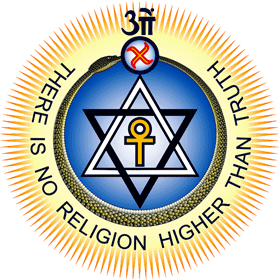
The work of that
School, she stated, was "to reconcile all religions, sects and nations
under a common system of ethics, based on eternal verities." The aim of
Ammonius was "to induce Gentiles and Christians, Jews and Idolaters, to
lay aside their contentions and strife, remembering only that they were
all in possession of the same truth under various vestments...
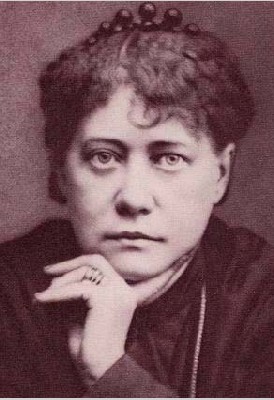
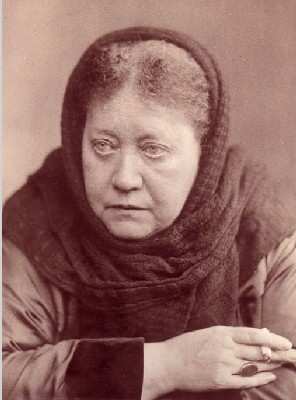
H.P. Blavatsky
(1877)
H.P. Blavatsky (1889)
Ammonius and his
disciples called their work the Eclectic Theosophical School, the word
"theosophy"-which means godlike or divine wisdom- being first used by
them.
"The Theosophical
Society maintains that it has three primary objectives which are: 1) to
form a nucleus of the brotherhood of humanity, without distinction of
race, creed, sex, caste or color; 2) to encourage the study of
comparative religions through philosophy and science; 3) to investigate
the unexplained laws of nature, and the powers latent in man... The
Society has no dogmas or creed, is entirely non-sectarian and includes
in its membership adherents of all faiths and of none, exacting from
each member only his tolerance for the beliefs of others that he would
wish them to exhibit toward his own".
According to J.
H. Fussell, the teachings of Theosophy are "at the same time religious,
philosophic and scientific, postulating ONE ETERNAL, IMMUTABLE,
ALL-PERVADING PRINCIPLE, THE ROOT OF ALL MANIFESTATIONS. From that one
existent comes forth periodically the whole universe, manifesting the
two aspects of spirit and matter, life and form, positive and negative,
the two poles between which the universe is woven. Those two aspects are
inseparably united; therefore all matter is ensouled by life, while all
life seeks expression through forms. All life being fundamentally one
with the life of the Supreme Existence which contains in germs all the
characteristics of its source, evolution is only the unfolding of those
divine potentialities brought about by the conditions afforded in the
various kingdoms of nature. The visible universe is only a small part of
this field of evolution.
Theosophy does
not hesitate to declare that:
God and man are
the two phases of the ONE ETERNAL LIFE AND CONSCIOUSNESS THAT
CONSTITUTES OUR UNIVERSE! The idea of Immanence of God is that He is the
universe; although He is also more than it is; that the solar system is
an emanation of the Supreme Being as clouds are an emanation of the sea.
This conception makes man a part of God, having potentially within him
all the attributes and powers of the Supreme Being. It is the idea that
nothing exists except God, and that humanity is one portion of Him - one
phase of His being.
In common with
Christian Science, Unity, and other pantheistic theologies, Theosophy
conceives of God in strictly impersonal terms, while asserting that man
is in a spiritual sense, part of God. L. W. Rogers put it this way, when
he wrote:
In divine
essence, latent power and potential spirituality, man is an image of
God, because he is part of him. The same idea is more directly put in
the Psalms, with the assertion "ye are Gods" (Ps. 82, 6; John 10, 34).
If the idea of the immanence of God is sound, than man is a literal
fragment of the consciousness of the Supreme Being, is an embryo-God,
being destined to ultimately evolve his latent powers into perfect
expression. The oneness of life was explicitly asserted by Jesus... It
is an unqualified assertion that humanity is a part of God, as leaves
are part of the tree, not something a tree has created, in the sense
that a man creates a machine, but something that is an emanation of the
tree, and is a living part of it. Thus only has God made man. Humanity
is a growth, a development, an emanation, an evolutionary expression of
the Supreme Being...The human soul is an individualized fragment of that
divine life... is literally a spark of the divine life, and latent
within it are the characteristics of that central light from which it
originated. The theosophical conception of the soul is that it is
literally an emanation from God, and since it is therefore of its own
essence, it became clear why Theosophists assert that man is a God in
the making.
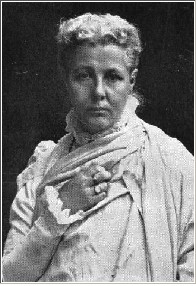
Annie Besant
Concerning man,
Annie Besant (1847-1933) who took over the
reins of leadership after the death of Madam Blavatsky, Judge and his
successor, Catherine Tingley, once declared, "Man is a spiritual
intelligence, a fragment of divinity clothed in matter". And
Krisnamurti, the adopted son of Mrs. Annie Besant, once stated,"...you
are God and you will only what God wills; but you must dig deep down
into yourself to find the God within you, and listen to His voice, which
is your voice..." Theosophy declared that "all men are innate
divinity...so that in time all men become Christ."
Theosophy is
opposed to not only the Biblical teaching of God's personality and
nature, as well as the deity of His Son, but it also vigorously denies
Christ's substitutionary sacrifice for all sins. The Theosophist wants
no part of the vicarious sacrifice of Jesus; in fact it is personally
repugnant to him. He considers it "an ignoble belief" that we can fling
our sins upon another.
Theosophy divides
Jesus and Christ, making Jesus only the outer man, and Christ a divine
consciousness immanent within Him, and within all men, to a greater or a
lesser degree.
Theosophy teaches
also the doctrine of Karma and Metempsychosis.
"The Secret
Doctrine - name of a book written by Mme. Blavatsky, - teaches the
fundamental identity of all Souls with the Universal Over Soul...and the
obligatory pilgrimage for every Souls...through the Cycle of Incarnation
(or Necessity) in accordance with Cyclic and Karmic Law, during the
whole term...The pivotal doctrine of the Esoteric philosophy admits no
privileges or special gifts in man, save those won by his own Ego
through personal effort and merit throughout a long series of
metempsychoses and reincarnations..."
Those who believe
in Karma have to believe in destiny, which from birth to death, every
man is weaving thread by thread around himself, as a spider does his
cobweb... This Law, whether Conscious or Unconscious - predestines
nothing and no one... Karma creates nothing, nor does it design. It is
man who plans and creates causes, and Karmic law adjusts the effects;
which adjustment is not an act but universal harmony, tending ever to
resume its original position, like a bough, which, bent down too
forcibly, rebounds with corresponding vigor...Karma has never sought to
destroy intellectual and individual liberty... It has not involved its
decrees in darkness purposely to perplex man, nor shall it punish him
who dares to scrutinize its mysteries. On the contrary, he who unveils
through study and meditation its intricate paths, and throws light on
those dark ways, in the windings of which so many men perish owing to
their ignorance of the labyrinth of life, is working for the good of his
fellow-men... Believers in Karma cannot be regarded as Atheist or
materialists - still less as fatalists... Karma is a highly
philosophical truth, a most divine noble expression of the primitive
intuition of man concerning Deity. It is a doctrine which explains the
origin of Evil, and ennobles our conceptions of what divine immutable
Justice ought to be, instead of degrading the unknown and unknowable
Deity by making it the whimsical, cruel tyrant, which we call
Providence...
Intimately, or
rather indissolubly, connected with Karma, then, is the law of rebirth,
or of the reincarnation of the same individuality in a long, almost
interminable, series of personalities. The latter are like the various
costumes and characters played by the same actor, with each of which the
actor identifies himself and is identified by the public, for the space
of a few hours...
"Pilgrim" is the
appellation given to our Monad... during its cycle of incarnations. It
is the only immortal and eternal principle in us, being an indivisible
part of the integral whole - the Universal Spirit, from which it
emanates, and into which it is absorbed at the end of the cycle... Is
this annihilation, as some think?...To see in Nirvana annihilation
amounts to saying of a man plunged in a sound dreamless sleep... that he
too, is annihilated... Re-absorption is by no means such a "dreamless
sleep," but on the contrary, absolute existence, an unconditioned unity,
or a state, to describe which human language is absolutely and
hopelessly inadequate...
The doctrine of
Metempsychosis has been abundantly ridiculed by men of science and
rejected by theologians, yet if it had been properly understood in its
application to the indestructibility of matter and the immortality of
spirit, it would have been perceived that it is a sublime conception...
If the Pythagorean metempsychosis should be thoroughly explained and
compared with the modern theory of evolution it would be found to supply
every "missing link" in the chain of the latter... there was not a
philosopher of any notoriety who did not hold to this doctrine of
metempsychosis, as taught by the Brahmans, Buddhists, and later by the
Pythagoreans.
The esoteric
doctrine teaches, like Buddhism and Brahmanism, and even the Kabala,
that the one infinite and unknown Essence exists from all eternity, and
in regular and harmonious successions is either passive or active. In
the poetical phraseology of Manu these conditions are called the "day"
and the "night" of Brahma. The latter is either "awake" or "asleep."
...Upon inaugurating an active period of expansion of this Divine
essence, from within outwardly, occurs in obedience to eternal and
immutable law, and the phenomenal or visible universe is the ultimate
result of the long chain of cosmic forces thus progressively set in
motion. In like manner, when the passive condition is resumed, a
contraction of the Divine essence takes place, and the previous work of
creation is gradually and progressively undone. The visible universe
becomes disintegrated, its material dispersed; and "darkness," solitary
and alone, broods once more over the face of the "deep". To use a
metaphor which will convey the idea still more clearly, an outbreathing
of the "unknown essence" produces the world; and an inhalation causes it
to disappear. This process has been going from all eternity, and our
present universe is but one of an infinite series which had no beginning
and will have no end.
Walter Martin,
author of The Kingdom of the Cults affirms that Theosophy is Eastern in
its origin; it is Hinduistic and Buddhistic in its theology, Gnostic in
its vocabulary, and Christian only in its key terminology, which is
specifically designed to imitate the true content of the
Gospel...Theosophy is opposed to not only the true Biblical teaching of
God personality and nature, as well as the deity of His Son, but it also
vigorously denies Christ's subtitutionary sacrifice for sin.
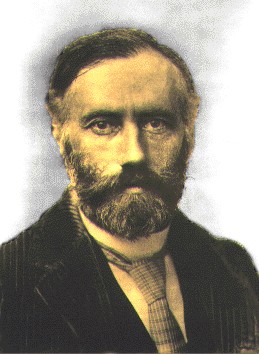
William Q. Judge
William Q. Judge (1851-1896), a former
president of the Theosophical Society in America, once said: "The
educated and inquiring mind knows that dogmatic religion can only give
an answer invented by man while it pretends to be from God."
The Secret Doctrine,
1888, Theosophy Co. Los Angeles, I, 16-17, 48 fn 53-54, 238, 266,
477-478, 639, 643-644; II, 304-306.
TOC |
Preface | Chapters:
1 2
3 4
5 6
7 8
9
10 11 12
13 14
15 16
17 18
19
|